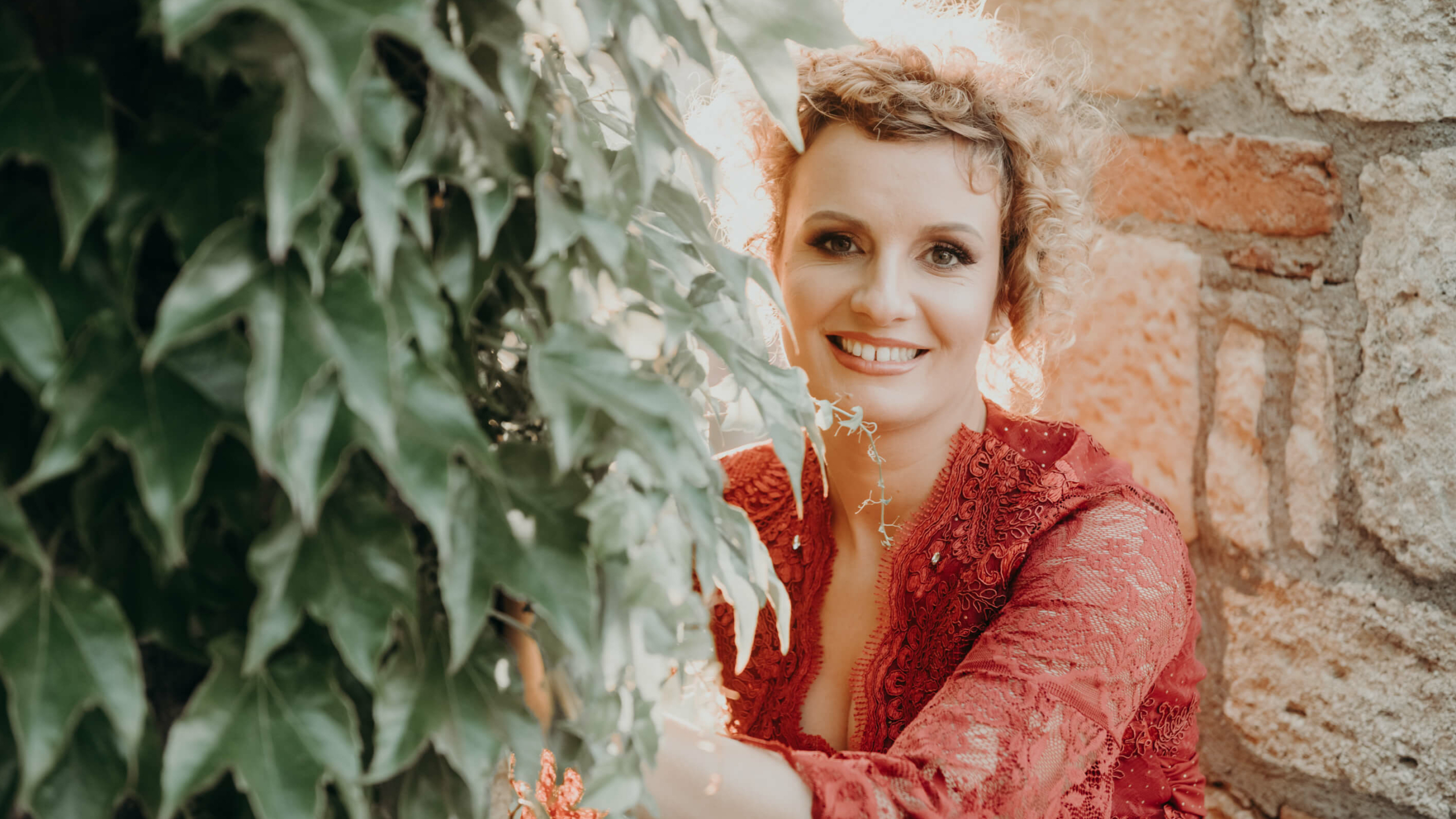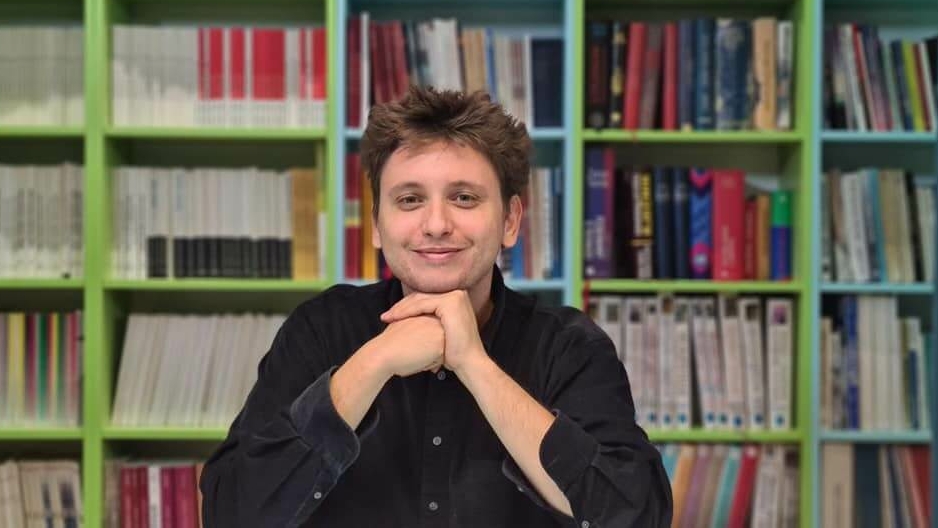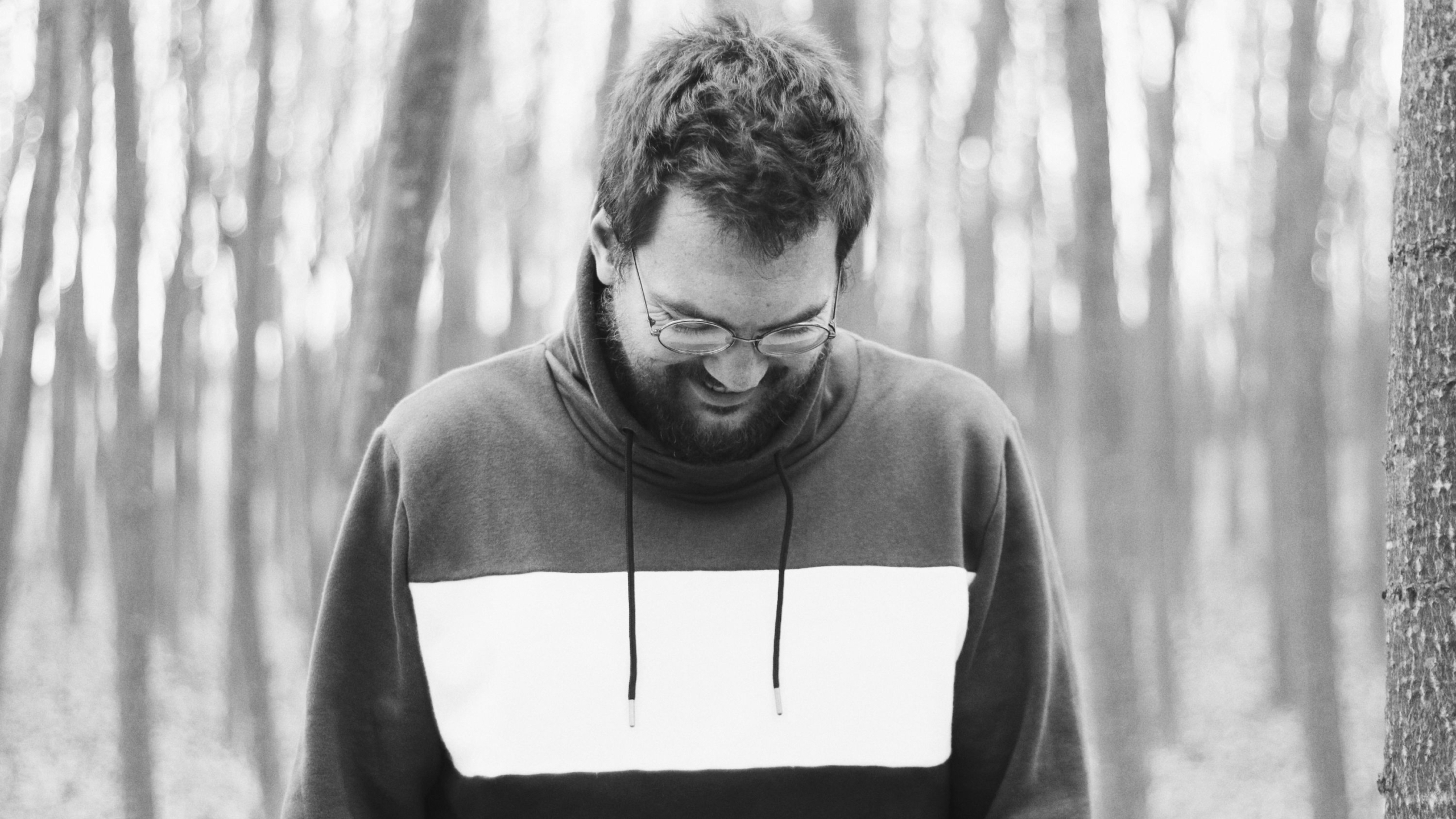Ethnomusicologist Bojana Nikolić Petričković combines scientific and practical ethnomusicological knowledge in her work. She is dedicated to preserving, nurturing and promoting authentic Serbian and Balkan music. The main area of her research is the vocal styles and singing techniques of the Balkans. She is actively working on digitalizing ethnomusicological materials and has given many expert musicological lectures and workshops, in which she presented traditional Serbian singing. She talked to P-portal about the importance of preserving, selflessly sharing and passing down traditional singing, about singing styles and techniques and especially about the music of Serbs from Croatia, which she also studied for her master’s thesis.
Ten years have passed since the noted album Oj, goro with mostly unknown or unsung songs. Looking back now, how do you view this special and significant work?
The album Oj, goro is very important to me because it was the beginning of my institutional work on preserving Serbian and Balkan cultural heritage through the Balkan Culture Heritage Center for Music Production, Education and Publishing (www.balkanch.com). I founded the center in 2010, and publishing was started within it to make our rich traditional culture and ethnomusicological sound archives more accessible. The album Oj, goro was the first release, containing 13 traditional songs. This CD is the fulfilment of a girl’s dream to preserve our heritage, done with great respect toward all the songs that were passed down through centuries and came to me to be recorded. The songs on the CD are those I sang in high school and college. They are not so well-known because one of the basic ideas of my work is to show the richness of our heritage and enrich the repertoire of young singers and singing groups. The fourteenth track on the album is my vocal improvisation, called Moja zemlja (My Country). In it, I used different vocal techniques to sing about the sufferings of Serbs through history, wars, exiles and abandoned hearths. Moja zemlja is the lamentation for all the regions where there are no longer any Serbs.
You were only 26 when you founded the singing school, which has so far successfully taught 12 generations. How and how much do young people today listen to and cherish traditional music?
I founded the school on my own when they told me at the state school that there will be a job opening in 20 years. I was brave and gathered young people through the Balkan Culture Heritage; I started passing on to them my knowledge and love for traditional singing and singing styles. There are more and more young singers and singing groups that nurture traditional and spiritual songs. I am very pleased with that, and it gives me hope that our song and identity will endure.
You say that anyone who practices can improve their singing a lot and that only a minimum of musicality is needed. “A person needs to find that which they themselves are.” This demystifies traditional singing and gives hope and motivation to many shy people. Is there some experience you can share with us?
Singing requires only a basic ear for music that 95% of people have. What is needed is setting the right vocal technique, and most people could improve a lot with practice. It’s important that everyone finds their unique vocal timbre, volume and range. There is no vocal technique that cannot be mastered. We just need to have the right approach. The “groktalice” songs are considered some of the most difficult to perform, and they are performed by 12-year-olds at my school.
This specific technique of voice shaking was protected by UNESCO at the request of the Republic of Croatia under the name “ojkanje singing.” This technique was predominantly performed by the Serb population, and the correct way to register it would have been regionally because it is sung in Croatia (Dalmatia, Kninska Krajina and Lika), Bosnia and Herzegovina (Central Bosnia and Bosanska Krajina) and Serbia (Vojvodina) by colonists and refugees from Croatia and Bosnia.
Authentic expression – only in the field
You are probably often asked how we can preserve traditional songs in their authentic form. Has your answer changed over the years?
We must record in the field, in villages, as much as possible. There are still old people possessing traditional knowledge in its authentic form, passed down through generations. Many areas in Serbia, Bosnia and Herzegovina, Croatia and Montenegro are not explored in terms of ethnomusicology and ethnochoreology. Even that which is recorded is not available since the archives are closed and only a very small number of scientists have access. Materials are not available, and many have deteriorated due to neglect. The situation is alarming because grandmas and grandpas that no one has ever recorded die every day. With their death dies their knowledge and the cultural identity of a region and a people.
I wanted to initiate a series of field studies to preserve this knowledge, but such a large undertaking needs the state’s institutional support. It should be a national project.
The question that often follows the previous one is the question of the responsibility of a society and the way it takes care of its ethnomusicological tradition.
Unfortunately, the funds allocated for cultural heritage in Serbia are extremely limited, and they are normally awarded to state institutions – colleges and institutes, which are already funded by the state. Very few associations get funded. Professor Dragoslav Dević’s CD sound archive, Serbian Vocal Tradition 1, containing recordings made between 1961 and 1993, got the support of the Ministry of Culture of the Republic of Serbia in 2015. That is the most significant release by the Balkan Culture Heritage. Since then, we have been applying for seven years for the funds to continue publishing one of the oldest and most important sound archives in our country and still haven’t received any support.
Traditional songs of the Balkan area exhibit some unique characteristics but also a common lyrical and musical content. What are the characteristics of the lyrical and musical content of folk songs?
There are two main, different styles on the territory of the central and western Balkans: the rural tradition and the town or city tradition. The rural tradition is one of the oldest preserved traditions in the world, and it is still a living tradition – it can be found in its authentic form. We should be proud of that, and it should be one of our most important brands when visitors from abroad ask to see something authentically ours. Unfortunately, foreigners think our only traditional instrument is the trumpet, but the trumpet is primarily a Western European instrument that became more widely popular in Serbia only in the mid-twentieth century. Unlike trumpet playing, the tradition we have is hundreds of years old. The practice of singing accompanied by gusle is also very old.
The rural vocal tradition is divided in ethnomusicology into the older tradition – songs “na glas” and the younger tradition – songs “na bas.” Songs “na glas” include songs “u glas,” “iz vika,” “u dvoje,” “gange,” “groktalice,” “ojkače,” “potresalice,” “rozgalice” and many others with local terminology. Town and city music are of a different style than rural music. They have been nurtured by the media and broadcast in radio and television shows much more. I guess we were ashamed of the rural tradition, so the media did not cover it much, and we even wanted to make the city songs “prettier,” so they were performed in an operatic style for decades, which is stylistically wrong. Thankfully, in recent years and with the coming of young singers, this practice is changing at RTS. These are songs such as “Moj golube,” “Marijo, ćero, Marijo,” “Milica jedna u majke,” “Zapevala sojka ptica,” “Rado, kćeri, Rado” and others. Sevdalinke are also town and city songs. They are a style of song sung in southern Serbia, Kosovo and Metohija, Bosnia and Herzegovina, Montenegro and Macedonia. We also have the interesting tradition of tambura orchestras in the north.
Do the lyrics or the melody of a song say more about a people in a certain region?
A style is geographically determined by the melody. Texts same or similar in form and content can be found in regions very far apart. The melody geographically determines the stylistic borders.
Do you recognize some characteristics (of the rhythm, melody, impression, style…) that the population of a region have “in their blood”?
Stylistically the most diverse is the old rural singing “na glas.” Songs “iz vika” are sung in western Serbia and nowhere else. “Ganga” is sung is Herzegovina, “romanijska kajda” – in Romanija and eastern Bosnia, that is, Republic of Srpska, and “ojkača” is sung only on Kozara – Potkozarje, Kordun and Banija.
Memories and knowledge cannot be lost
You studied the singing of Serbs exiled from Croatia. What are your experiences from that period like?
In the evil times of war, when people lose their material possessions, they don’t lose that which they carry inside, and that is memories and knowledge. If the houses were taken away, song was not. People sing the songs of their home wherever life takes them. In the late nineties and early 2000s in Belgrade, I searched for people who had fled Croatia because I wanted to record as much material as I could. I came across people who had come much earlier, but they still sang their songs and cherished their native region. I still have a wonderful cooperation with the Krajina Folklore Society, the group Women of Krajina Villages, the Kordun Group, the Petrova Gora Kordun Folklore Society, the Guardians of the Grave of Christ and many others. They are all good and wonderful people.
My master’s thesis in ethnomusicology dealt with the newly composed Krajina music through the example of the group Jandrino jato. In the thesis, I follow the phenomenon of singing “na bas,” which has become the symbol of the Krajina people scattered throughout the world, as well as the music production that followed modern trends. The texts changed over the years; most were patriotic in the beginning, but many included love themes and humorous lyrics later. That’s how some of the hits were made: “Malo Slađa, malo Zorka,” “Otišla je Danijela” and others.
The “ojkača” is defined by the melody and not the text. You warn that of all the old singing styles, the “ojkača” is endangered the most. Why is that?
The “ojkača” is one of the most difficult Serbian vocal styles to perform. The parallel, secondary consonances with rising and falling melodies are very specific. For an amateur singer not from those three regions, it is very difficult to discern what is sung by which voice. Young singing groups practically don’t sing the “ojkače,” and they are, therefore, extremely endangered.
There arose a terminological problem with “ojkača” because the lyrics (rhymed decasyllable) were taken as the basis for defining the style. This is an extremely wrong approach because the rhymed decasyllable is one of the most common lyrical forms of traditional Serbian singing, present in all the areas where Serbs lived or live – in Croatia, Bosnia and Herzegovina, Serbia and Montenegro. I find on YouTube many Krajina songs, such as the “krajiška kontra,” song “na bas” or “groktalica,” signed as the “ojkača,” which is very wrong. The “ojkača” is not a universal Krajina singing style. The “ojkača” is a very specific singing style determined by the melody and not the text. Anyone who signs the real Krajina “ojkača” will tell you the same. There is no “ojkača” in Dalmatia, Kninska Krajina, Lika, Bosanska Krajina, Herzegovina, Serbia, Montenegro, Macedonia or anywhere else but the three regions I mentioned.
How important are traditional music festivals and congresses?
Festivals and congresses attract excellent performers, and singers especially enjoy competitions. They motivate members of signing groups to be active and practice. These are also places where people can connect to do further, detailed recordings and field research. There are many folklore and singing group festivals in Serbia, especially in the summer.
Translation from Croatian: Jelena Šimpraga








